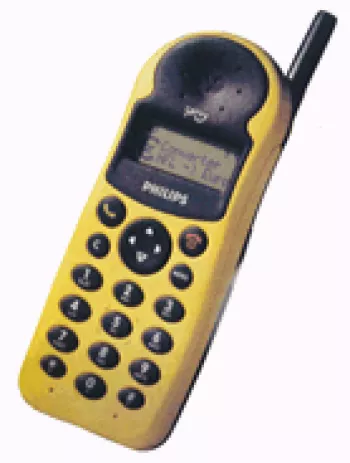
Overview of Philips 968
The Philips 968, announced in July 2005, was a notable mobile device from Philips' lineup that marked its presence in the mid-2000s. Though it was eventually discontinued, the phone offered a blend of features that were quite innovative for its time. In this article, we delve deep into the specifications, features, and functionalities of the Philips 968, providing a comprehensive insight into this classic piece of technology.
Design and Build
The Philips 968 boasted dimensions of 95 x 48.7 x 25 mm, with a volume of 115 cc, which provided a sturdy and compact form factor. Weighing in at 128 grams, it was relatively lightweight, making it portable and easy to handle. The phone was available in two distinct colors: Titanium Tempo and Black Bass. It featured a Mini-SIM card slot and was encased in a durable plastic housing that could withstand the rigors of daily use.
Display Features
The device came with a TFT resistive touchscreen, capable of displaying 256K colors. While the exact size of the screen isn't specified, it had a resolution of 240 x 320 pixels, offering a reasonable viewing experience by the standards of its time. The touchscreen interface, though resistive, allowed for basic navigation and interaction with the phone's operating system and applications.
Operating System and Platform
Philips 968 was powered by the Linux operating system, a somewhat atypical choice for mobile devices of that era, which were mostly dominated by proprietary systems or Symbian. This choice enabled more open development and the possibility of custom applications, although the market for Linux mobile apps was limited at the time.
Performance and Storage
The device offered 40MB of internal storage, which was a modest amount, but users could expand this via an SD card slot. This expandability was significant as it provided flexibility for users to store more media and documents. Unfortunately, details about the CPU and RAM are not specified, limiting our complete understanding of its performance capabilities.
Camera Specifications
Equipped with a single 1.3 MP camera, the Philips 968 wasn't designed for modern photography but served basic photo capturing needs. An LED flash supported the camera, providing aid in low-light situations. The camera was also capable of recording videos, allowing users to capture moments, albeit at a basic quality level.
Networking and Connectivity
The Philips 968 supported GSM technology operating on 900, 1800, and 1900 MHz bands for 2G networks. It also featured GPRS Class 10 for enabling data services. However, the device lacked connectivity options such as WLAN, Bluetooth, and GPS, which limited its use in terms of modern data transfer and location-based services.
Sound and Multimedia
For sound, the phone included a loudspeaker and supported various alert types including vibration, polyphonic, and MP3 ringtones. It didn't have a 3.5mm headphone jack, which was a limitation for personal audio usage. Notably, the device did not include FM Radio, which was a common feature in many phones of that time.
Internet and Additional Features
The Philips 968 came with a WAP 2.0/xHTML browser, providing users with basic Internet browsing capabilities. However, given the lack of high-speed data services and the simplistic browser, the internet experience was limited. The device did not include advanced sensors or positioning technologies, which further underlined its focus on basic functionality.
Battery Life
Powering the Philips 968 was a removable Li-Ion 1450 mAh battery. This battery provided the device with up to 240 hours of standby time and up to 4 hours of talk time, which was fairly standard for phones of that generation. The removable nature of the battery allowed users to replace it easily, a convenience lost in many of today's modern smartphones.
Conclusion
The Philips 968 was a product of its time, balancing features and practicality for users needing a reliable and straightforward mobile device. While it lacked many modern connectivity options and advanced multimedia features, its robust design and Linux operating platform made it a unique entry in the mobile market. Though technology has advanced considerably since the Philips 968, revisiting such devices allows us to appreciate the evolution of mobile technology.
Key Features of Philips 968
- GSM Technology with 2G Bands (GSM 900 / 1800 / 1900)
- TFT Resistive Touchscreen, 256K Colors Display
- Linux Operating System
- Expandable Memory with SD Card Slot
- 1.3 MP Main Camera with LED Flash
- Removable Li-Ion 1450 mAh Battery
- Compact and Lightweight with Dimensions: 95 x 48.7 x 25 mm
- Available in Titanium Tempo and Black Bass Colors
Disadvantages of Philips 968
- No EDGE support for faster internet connectivity.
- The device is discontinued, leading to potential issues with support and spare parts availability.
- Heavy weight for its size at 128 g.
- No Wi-Fi capability for wireless internet connections.
- No Bluetooth functionality for wireless communication with other devices.
- Lack of GPS positioning feature.
- No radio feature available for FM or AM listening.
- Proprietary USB instead of standard options, limiting compatibility with common accessories.
- No front-facing selfie camera.
- No 3.5mm headphone jack available for conventional headphones.
- Limited internal storage of 40MB.

View Also
More Phones
All Rights Reserved +14266 Phones © Mobilawy 2025

























